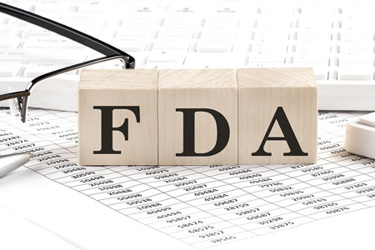How To Educate Regulators On What Matters To Patients

By Ed Miseta, Chief Editor, Clinical Leader

The patient voice is at the center of medical product development. Dr. Ebony Dashiell-Aje, Executive Director and Head of Patient Centered Outcomes Science at Biomarin Pharmaceutical, Inc, believes patients are experts in their own conditions and the ultimate consumers of medical products, which makes it important for the patient experience and patient voice to be considered in drug development. She believes regulators, sponsors, and researchers must engage patient stakeholders to support a true patient-centric approach.
“With the greater emphasis on patient-centricity, patients are valued as an active participant in their own care,” says Dashiell-Aje, speaking on a recent Patients As Partners webinar. “There is an increased emphasis on evaluating treatment benefit using patient-centric concepts and input from the patient community. Patients and caregivers are well positioned to contribute to the comprehensive drug development process. In fact, regulators now urge sponsors and researchers to systematically engage patients and caregivers to define the disease burden and unmet needs.”

After the launch of FDA's Patient-Focused Drug Development initiative, greater attention has been paid to ways in which the patient voice can be more readily and transparently integrated into regulatory decision making. Progress has also been made at EMA and MHRA to encourage sponsors to incorporate the patient voice throughout their medical product development.
FDA Makes Improvements
Improvements have been made at FDA to promote greater patient-centricity in clinical trials. Specifically, progress has been made in developing and disseminating guidance to industry about what constitutes valid and reliable patient experience data and how to incorporate the patient voice into medical product development. Still, Dashiell-Aje notes there is room for improvement in getting patient and community insights better integrated into regulatory decision-making.
“There's a need for greater guidance on how the patient community can partner with pharma on patient experience data generation and how the data can be incorporated into the regulatory review process,” she says. “There is also a need for more pragmatic approaches through publicly available examples. For instance, insights that will help patient advocacy groups and stakeholders tackle common challenges to applying regulatory guidance on patient experience data generation to their efforts.”
If regulators are more willing to consider patient-centric insights in regulatory decision-making, what more can be done to generate the insights? Dashiell-Aje has several engagement suggestions which include meetings, panels, and workshops.
First are patient listening sessions, which are small, informal, non-public meetings that are product agnostic and driven by the patient community (not industry sponsors). They can be conducted via teleconference or in person and allow participants to connect more directly with FDA staff. During these meetings, patients can share experiences and perspectives on their health, overall condition, and what is most important to them. The meetings also give the FDA an opportunity to connect with different patient communities, including groups that are underrepresented in trials. The meetings have specific interests across many different divisions and centers at FDA and are valuable for informing regulatory decision making.
“The first step is requesting the meeting,” says Dashiell-Aje. “If FDA did not request the meeting, a patient group can request it through the Patient Affairs Staff or the Center for Drug Evaluation and Research (CDER). The meeting request should include specifics related to the meeting such as topics, goals, and a proposed date and time. Attendees and their affiliations will propose agenda topics and discussion questions and allow FDA to provide input as well.”
If you’re considering requesting a listening session, Dashiell-Aje has a few key considerations. First, invite people with diverse opinions from a broad range of representative groups, including patients, caregivers, and patient advocacy groups. You should also plan well in advance since regulators have a heavy workload. Finally, be prepared to refine the agenda or discussion topics based on feedback from the Agency. Consulting firms can also help drive meeting preparation.
A Patient-Focused Drug Development (PFDD) Meeting
Another way to connect with regulators is through Patient-Focused Drug Development meetings. In the past, FDA has conducted these meetings to obtain patient perspectives on topics related to specific diseases. FDA now supports and encourages external stakeholders to convene externally led Patient-Focused Drug Development meetings to best understand the impact of different conditions on the lives and experiences of patients. The input from these meetings is summarized in a report which have been able to inform FDA's decisions and oversight during drug development and the review of marketing applications. As with the listening sessions, there must be some sort of formal request submitted to FDA for these meetings. To hold one of these meetings, a letter must be submitted to FDA at least a year in advance. FDA will then agree to the meeting and provide input on how the meeting should be shaped.
“To successfully plan a Patient-Focused Drug Development meeting, I recommend holding the meeting even before a therapy enters clinical trials,” states Dashiell-Aje. “The discovery and pre-discovery phases are when companies and regulators should understand how patients view their condition. I also recommend leveraging annual conferences and scientific workshops to incorporate meetings at the lowest possible burden. To secure broad participation, make sure you reach out early via many channels. Also consider offering scholarships or grants to help patients get to the meetings in person.”
In addition to the listening sessions and Patient-Focused Drug Development meetings, Dashiell-Aje recommends sponsor-led meetings at which the patient voice can be elevated. Standalone patient engagement meetings with the FDA can be requested by a sponsor where patients and caregivers can attend or provide written statements. The meetings must be granted by the regulator and are time dependent.
“There are always opportunities for patients and caregivers to provide insights to FDA during the sponsor-led engagements,” adds Dashiell-Aje. “In addition to meetings, there are also many opportunities for patient representatives to sit on panels as well as participate in workshops and other programs that FDA has sponsored. We know the patient voice is critical to move medical product development forward, and there are numerous opportunities to independently engage with FDA on your community's behalf to inform regulatory decision making through continued collaboration with researchers, industry sponsors and consultants. This is your opportunity to elevate the patient voice and educate regulators on what matters most to them.”
Lastly, Advisory Committee meetings, called by FDA to obtain independent expert advice on scientific, technical, and policy matters, provide another opportunity to get external stakeholder input. While Advisory Committee meetings don’t take place often, if called, the public has an opportunity during these meetings to submit a formal request for participation in the open public hearing session of the meeting. Participation in this open public hearing can be in the form of oral or written testimony, but it is limited.
To view the webinar featuring Dr. Ebony Dashiell-Aje, please click here.
